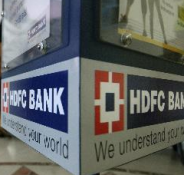
"Almost 80 per cent of middle management and 50 per cent of junior officers will be lost through retirement within the next 10 years," said the report of public sector banks. Adding that these banks faced "twin challenges the need to induct talent in large numbers and the need to contain staff costs".
The heads of two banks spoken to said they were aware of the issue. According to Union Bank of India's chairman and managing director, M V Nair, the bank will be aiming to hire 2,500 staff in the current financial year, as compared to 1,500 in the previous year.
Bank of Baroda chairman and managing director M D Mallya said his bank will hire the same number of staff this year as compared to last year, which was 3,500.
Bank of Baroda and Union Bank's staff strength was around 39,000 and 28,000 at the end of 2009-10. For both the banks, currently, five per cent of total staff strength is involved in sales and the target is to increase the figure to 25-30 per cent over the next couple of years.
The BCG report shows HDFC Bank is the third largest employer in the sector, with close to 52,000 staff, only behind State Bank of India and Punjab National Bank.
Incidentally, the cost per employee for government banks was higher than its private sector counterparts in 2009-10, a reversal of the norm in recent years, says the report.
It said the average employee cost for government banks was Rs 5.6 lakh per year and Rs 5.3 lakh for private sector banks. About 62 per cent of the costs of public sector banks are on employees; in private banks, it was 37 per cent. Globally, the ratio is about 50 per cent for most banks.
Financial inclusion
A survey conducted by the consultancy firm has revealed government banks are not very confident of the task of financial inclusion in a profitable manner.
"The current business model of a commercial bank has a cost structure that is economically unviable for rural markets. During the last decade, the total number of rural branches of commercial banks dropped by 1.2 per cent," the report said.
The report suggested banks ring-fence its financial inclusion activities into a separate unit, with separate profit and loss statement and separate human resources.